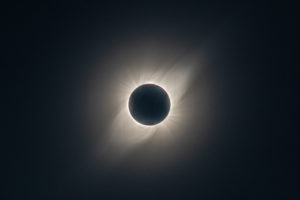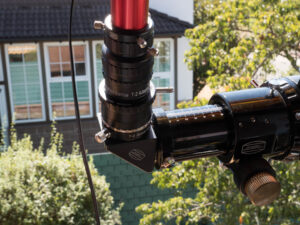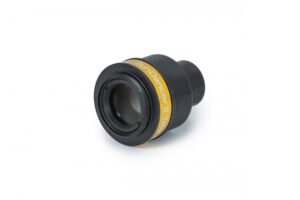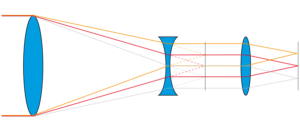Author Archives: Alexander Kerste
Alex is a studied biologist and works as a freelancer as an author, consultant and translator. After his studies and the publication of the Kosmos Starchart-Set in 2004, he was a regular freelancer for Astronomie Heute and the yearbook Der Himmel for the Spektrum-Verlag in Heidelberg. He is in charge of the Beginner courses on www.Astronomie.de and is a voluntary active member in the Robert-Mayer-Observatory since 1993. Since then, he has published a number of books on Celestron-Telescopes as well as Digiscoping and Astrophotography. One of his books on Astronomy with binoculars is also freely available at freebook.fernglasastronomie.de. In addition he supervises the Northern lights and star tours from Hurtigrute – these were also published in a travel guide, further articles can also be found on his blog kerste.de.
-
Solar Eclipses 2024
This entry was posted on February 8, 2024 Last modified on February 27, 2024.
For years our colleagues have been hunting for the next solar eclipse in the most remote places in the world. See e.g. our previous blog posts on AstroSolar.com: 2015: Solar Eclipse Adventrue in Svalbard 2016: Solar Eclipse on the Molucca Islands 2017: "Great American Eclipse" 2019: Solar Eclipse in Chile We can look forward to two solar eclipses in 2024! Total Solar Eclipse in America on April 8th, 2024 Map of the eclipse on April 8th, 2024. Source: wikipedia.org Observers in Central and North America can look forward to a total solar eclipse on April 8th, 2024. It will start in the western Pacific; then the moon's shadow will move fast to the north-east. It will cross Mazatlan in Mexico and the Niagara Falls on...
-
The eyepiece series from Baader Planetarium
This entry was posted on October 17, 2022 Last modified on February 27, 2024.
The eyepiece is half the optics - and every telescope is only as good as its weakest link. That is why Baader Planetarium not only offers high-quality star diagonal mirrors and prisms (which we present in this PDF), but also several series of eyepieces. Each has its own special features, which we would like to present to you briefly here. Besides, they are firmly integrated into the Baader accessories programme and offer interesting solutions for eyepiece projection and binocular observation. The series at a glance Classic Hyperion® Morpheus® Ortho/Plössl Aspheric Modular Zoom Focal length 6 / 10 / 18 / 32 31 / 36 5 / 8 / 10 / 13 / 17 / 21 / 24 8-24 (with Barlow 3,6-10,7) 4,5 /...
-
The camera at the eyepiece
This entry was posted on October 17, 2022 Last modified on February 27, 2024.
Pitfalls and opportunities In this article we want to show the different ways to enlarge the image or to take pictures through the eyepiece quickly and easily with a camera. These techniques are interesting for photographing the moon and planets as well as for anyone who wants to photograph through an eyepiece - for example, for nature photography through a spotting scope. "Getting closer" is the goal of many photographers. In other words, the longest possible focal length to image the objects as large as possible on the sensor. A practical rule of thumb for astronomers is that the sun and moon appear on the sensor approximately with a diameter of just under one centimeter per meter of focal length. Since long focal length telescopes...
-
Barlow lenses, their magnification factors and working distances
This entry was posted on October 17, 2022 Last modified on February 27, 2024.
Again and again the question arises whether a barlow provides the correct magnification at all. It is often overlooked that the magnification factor always depends on the correct working distance - you can read more about this in this PDF using the VIP Barlow as an example: Different Magnifications with the VIP-Barlow # 2406101 To settle this question once and for all, we took a few comparative shots on an ED80/600 telescope with a monochrome camera. Due to the seeing on a hot summer at an outside temperature of 30 °C, the shots of a neighbouring roof were somewhat unsteady, so that the sharpness of the individual frames is only of limited use for judging the quality of the Barlow lenses, but here we...
-
Are you ready for the Partial Solar Eclipse on Oktober 25th, 2022?
This entry was posted on September 27, 2022 Last modified on February 28, 2024.
Every now and then, the moon moves in front of the sun and we experience a solar eclipse. In Europe, we will have to wait until August 12th, 2026 for the next total solar eclipse. It will be visible as a total solar eclipse e.g. from Spain, while the sun will remain only partially eclipsed from Germany. Fortunately, we won't have to wait that long for the next partial solar eclipse: In the midday hours of October 25th this year, the moon will eclipse a third of the sun's disc. Observers in the north-east of the German-speaking region will have somewhat more of it than those in the south-west: on the island of Rügen, as much as 35% of the sun will be covered, in...
-
Test Report: Baader Solar Continuum Filter revisited – now with 7,5nm FWHM
This entry was posted on September 6, 2022 Last modified on February 27, 2024.
Sometimes it is worth giving things a second chance after many years. Panta rhei, as the saying goes… The Baader Solar Continuum Filter is such an inconspicuous thing that I had largely ignored after a first quick test 15 years ago and which has now completely convinced me in its current incarnation with 7.5nm FWHM: Baader 7.5nm Solar Continuum Filter (540nm) Baader 7.5nm Solar Continuum Filter (540nm) (various versions available) . This is due both to my observing experience and to product development and a larger variety of telescopes now in my reach. Spoiler: Correctly used, it has got an incredible potential – not only to remove the colour aberrations of achromatic lens telescopes as expected, but to my great surprise also when imaging the...
-
Solar observation and H-alpha-filters for Schmidt Cassegrains
This entry was posted on March 2, 2022 Last modified on February 27, 2024.
Again and again we receive requests for using H-alpha filters with Schmidt-Cassegrain or EgdeHD telescopes. In principle, this is possible, and a large aperture also provides much better resolution when observing the Sun than smaller instruments do. However, there are a few details to consider for telescopes with secondary mirrors; the following therefore applies in particular to Schmidt-Cassegrain and EdgeHD telescopes, but can also be applied to Cassegrains, Newtonians and other obstructed systems. The problem: To protect the telescope from the solar energy, a filter must be placed in front of the telescope. For white-light observing, there is otherwise danger for the mount of the secondary mirror, which can melt so close to the focal point if the tracking does not work perfectly (after all,...
-
The benefits of telecentric systems
This entry was posted on February 9, 2022 Last modified on February 27, 2024.
Telecentric System or Barlow Lens? A Barlow lens is the best-known way to change the focal length and thus the focal ratio of a telescope. A telecentric system is similar to a barlow, but also contains an additional positive lens element. This makes it possible to change the focal length of the telescope and to achieve a parallel beam of light. For most applications, therefore, a barlow lens is fine; but especially in connection with narrow-band interference filters (as for solar observation in H-alpha), the more complex construction of a telecentric system is absolutely necessary. However, both systems have their own advantages To understand the differences, you must first understand: The position of an image point depends on how far it is away from the...
-
Baader SunDancer II H-Alpha Filter – Test Review
This entry was posted on September 8, 2021 Last modified on February 20, 2024.
I was lucky enough to be able to "play" with one of the first SunDancer II H-alpha filters and see what it is capable of. Even though I am not one of the most experienced H-alpha observers, I have been able to observe the sun with the two H-alpha telescopes of the Observatory in Heilbronn/Neckar again and again for more than 20 years. These are a 20/20 H-alpha filter by Wolfgang Lille with 0.8Å on the 150/2250 refractor (which complements a classical prominence filter), and a Lunt LS-60 telescope. I freely admit that I find the concept of the Lunt convincing, especially for public observatories: a complete telescope with which nothing can go wrong. It's foolproof, which is especially important in an club where many...
-
Spectroscopy with the FlipMirror II Star Diagonal
This entry was posted on December 11, 2019 Last modified on February 16, 2024.
Instruction Manual: Baader FlipMirror II Star Diagonal Using the Baader FlipMirror II Star Diagonal (BFM II) at the Telescope The Baader FlipMirror II Star Diagonal (#2458055 , € 228,-) is not only an accessory for professional users, but much more: It is a helpful tool for every amateur astronomer – especially for astrophotography. First of all, the BFM II is designed to completely replace your standard star diagonal, so that you can keep observing as usual, just like with every good star diagonal. But the BFM II gives you much more options. You can create – from the beginnig, or step-by-step – your own system for photography and keep it always ready-for-use at your telescope. This will save you a lot of time and nerves....















